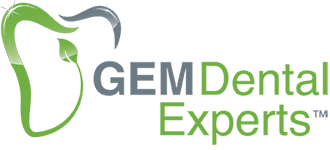
February 23, 2024
by Gabriele Maycher, CEO, GEM Dental Experts Inc. BSc, PID, dip DH, RDH:
Are flawed processes holding your team back from experiencing better efficiency, healthier clients, happier employees, and continued practice growth?
Challenge:
As part of the administrative team, we encounter a notable challenge in the effective transfer of information from clinicians. Our daily workload is often marked by a bustling environment – clients coming and going, incessant phone calls, and myriad administrative duties. Regrettably, clinicians may not fully grasp the intricate demands we navigate. How can we improve this process?
Solution:
This challenging dynamic between the administrative team and clinicians exists in most practices. Unfortunately, it not only jeopardizes the seamless execution of treatment plans for clients but also places undue stress on the administrative team, which is caught in the delicate balance of managing responsibilities while meeting clinicians’ expectations for prompt updates and information. Likewise, clinicians are grappling with similar pressures.
In the pursuit of a collaborative resolution, the following strategies can help your team foster smoother communication to alleviate these stresses and prevent breakdowns. This involves acknowledging the need for a more realistic timeframe, system, and processes that accommodate the intricacies of administrative responsibilities and the tight scheduling pressures faced by clinicians.
Hold regular meetings. Schedule monthly team meetings so that the administrative and clinical teams can discuss ongoing challenges and find collaborative solutions. Use this time as an opportunity to share updates on workload, identify potential bottlenecks, and brainstorm ways to streamline communication. Encourage both sides to share their perspectives and collaborate on continuous improvement and then regularly review and refine the communication and workflow processes based on feedback and experiences.
Establish communication protocols. Do you have clear communication protocols for transferring client information, including the specific times or personnel for exchange and a standardized transfer form? If your current form falls short in addressing transfer breakdowns, now is the time to rethink it. The form should be robust enough to facilitate a seamless transfer without necessitating a detailed conversation between clinicians and the administrative team. While a brief synopsis from the clinician is ideal, the form should stand as a sufficient standalone tool when time constraints arise. See form sample.
This information transfer is vital to a well-run practice. So, encourage clinicians to be deliberate and slow down as they complete the form, as rushed communication can compromise treatment plans.
Educate clinicians on administrative workload. Don’t assume that clinicians understand the full scope of your workload and responsibilities. Share specific examples of how rushed transfers may lead to errors or oversights in administrative tasks, potentially impacting client care.
Use technology to facilitate communication. Consider whether a shared digital platform for notes or a secure messaging system may be a good investment. Ensure that both teams are adequately trained on any new technologies as part of your onboarding process.
Establish realistic expectations. Engage in open conversations with clinicians about administrative time constraints and challenges and encourage them to communicate their urgent needs in advance whenever possible, allowing you to better plan and prioritize tasks.
In the end, investing in better communication will help minimize the risk of compromise and ensure that client treatments and recare are set appropriately.





Leave a Reply
You must be logged in to post a comment.